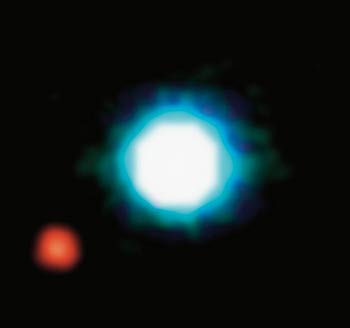Page 3

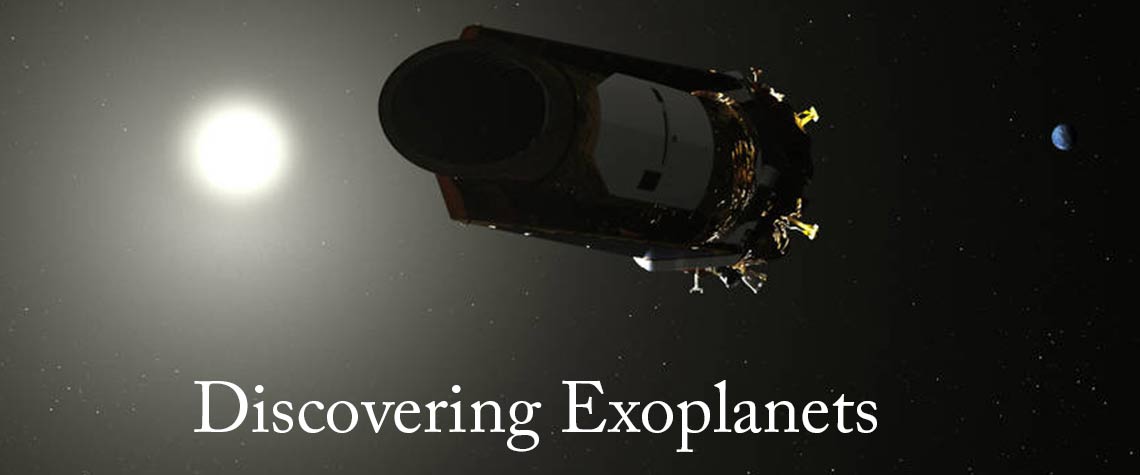
Looking Back at a Decade of Discovery
By Ginger Wentrcek
It's hard to believe that another year has passed and a new year has started. Even more hard to believe is the passing of a decade! The last 10 years have yielded a gold mine of information about that ancient question, “What is out there?” Scientists and astronomers have used a variety of new technological instruments to help us answer that question. In the past decade, over 4,000 exoplanets have been discovered with thousands more to be confirmed.
The Goldilocks Zone
The hunt for planets orbiting in a habitable zone around its sun yielded thousands of planetary candidates worthy study. Astronomers are looking for planets that are not so hot that water vaporizes from its surface and not so cold that water remains in a frozen state. Data collected by Kepler, Kepler2, and TESS suggest that there are possibly 40 billion planets orbiting in the “Goldilocks Zone” around red dwarfs or stars similar to our sun.
What is stunning is the fact that when Kepler was launched, scientists couldn't come close to knowing how many planets they would discover over the coming decade. Just think about the possibilities for the 2020-2029 decade.
Transit Method of Discovery
Kepler, Kepler 2 and TESS discovered exoplanets using the transit method. Targeted stars are examined for a dip in their visible light, indicating an orbiting planet. The size of the dip indicates the percentage of light from the star that is blocked which helps determine the size of the planet. Orbit information is determined by measuring how long it takes the planet to travel around the sun. Ground-based follow-up studies of the data then verify that the dip in visible light is a planet orbiting the sun.
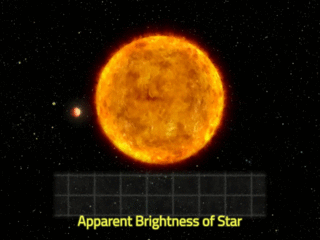
A star will have a dip in its brightness as a planet passes in front of it.
Credit: NASA's Goddard Space Flight Center
Doppler Spectroscopy Method of Discovery
Exoplanets are also located using the radial velocity method, also known as Doppler spectroscopy. The position of the star will change as a planet progresses through its orbit. Sensitive spectrographs measured variations in the frequency of light, tiny redshifts and blueshifts, in the star's emission; however, this early system of detection was know to produce errors until improvements were made in the technology.
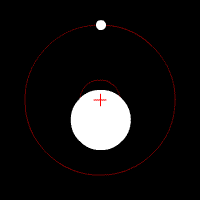
The star moves off center from the plus sign as the tiny planet orbits it.
Credit: Released into the public domain by its author, Zhatt.
Direct Imaging Method of Discovery
Direct imaging can offer a view of land masses, oceans, and atmospheric conditions. Because the light from the parent star is so much brighter than the reflected light from its planet, this is a more difficult method to use. This method is effective for planets that are massive and have orbits far from its star and may be more useful in the future when technology improves.
In the image to the right, the reddish area is Planet 2M1207b, five times larger than Jupiter.
Check out NASA's Exoplanet Archive.
Let's look at some of the major milestones over the last decade in our quest to find out “what is out there.”
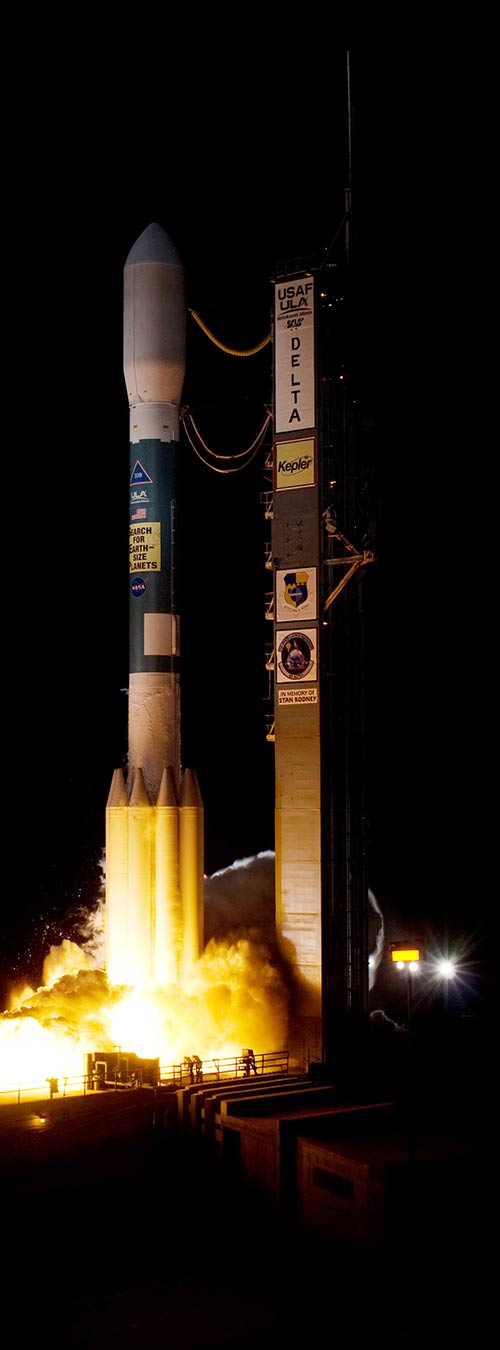
The Kepler spacecraft lifts off aboard a Delta II rocket on March 6, 2009. Kepler will watch one unchanging portion of the sky and monitor approximately 150,000 stars at a time.
Image credit: NASA/Kim Shiflett
2011
It was named Kepler-10b, the first rocky exoplanet discovered outside our solar system. Located in the Draco constellation, its sun is 560 light years from our solar system. Kepler-10b had the density of iron, is 1.4 times the size of Earth, and orbits its sun so closely that its daytime temperature is thought to be 2,500°F. It takes this small exoplanet less than 24 Earth hours to orbit its sun.
2012
A new class of planets was discovered and branded “Super-Puffs.” Located in the Kepler 51 system, these rare planets look large, like Jupiter, but are hundreds of times lighter in mass. Although these planets were discovered in 2012, it wasn't determined until 2 years later that their density was similar to cotton candy.
April 2013
Kepler 62e was one of five planets located about 1,200 light years away. This “super-Earth-size” planet was located in a habitable zone in the constellation Lyra, orbiting its star every 122 days. However, it may be a gaseous planet
Sept 2013
Orbiting a star 1,000 light-years from Earth, the source of reflected light on exoplanet Kepler-7b is thought to come from clouds in its upper atmosphere and is the first exoplanet to have its cloud distributions mapped. Although it is slightly closer to its star than Earth to our sun, Kepler-7b is thought to have a temperature of up to 1,800°F. This planet, which is 50% larger than Jupiter, has a Styrofoam-like density and lies in the Lyra constellation.
April 2014
Orbiting a star half the size of our sun, Kepler-186f, the first exoplanet the size of Earth, was discovered. It is located in a system about 500 light-years away in what is thought to be a habitable zone. The composition of Kepler-186f is unknown but is thought to be rocky. Kepler-186f is located in the constellation Cygnus.
June 2014
The Kepler space telescope had a major malfunction and engineers used the pressure of sunlight to ensure the telescope would continue to collect data and not drift off course. Kepler is now known as K2. Kepler watched the same area of space, while K2 will switch views approximately every 80 days. In addition to searching for exoplanets, K2 will study supernovae, galaxies, and stars.
July 2015
An exoplanet 60% larger than Earth was discovered orbiting in a habitable zone around a star similar to ours. Kepler-452b is located about 1,400 light years from our solar system. This exoplanet, described as a super Earth, is hosted by a star similar to our own G2 star, with the exception that its star is vastly older than our star, possibly on its way to becoming a red giant. That could have great implications as to the possibility that it could support life.
May 2016
Kepler2 hit the jackpot. Over 1,284 exoplanets were discovered, doubling the number of known exoplanets. At that time, it brought the number of Kepler exoplanets up to 2,325 and astronomers now believe there may be at least one exoplanet for each star.
August 2016
A group of astronomers working secretly discovered our closest exoplanet system in a habitable zone, Proxima Centauri b. The exoplanet orbits around Proxima Centauri, 4.2 light years away. More information about this planet may be extracted from data collected by the James Webb Space telescope.
February 2017
Forty light years away, a star called Trappist-1 was discovered to have seven Earth-size planets orbiting around it, some in the star's habitable zone. Because this system is so far away, it is difficult to describe each planet with accuracy. More information about the atmospheres and planet densities will come from a study conducted by using data collected by the James Webb Space Telescope. However, it is thought that Trappist-1 is so much smaller and cooler than our sun allowing some planets to have water on their surfaces.
December 2017
With the help of AI, a system called Kepler-90 is discovered. It is a system with eight planets, all orbiting its star closer than Earth is to our sun.

TESS collects and sends raw data to Earth which is then analyzed for identification of exoplanets.
Credits: NASA/Ames/Wendy Stenzel
April 18, 2018 - Welcome TESS
TESS (Transiting Exoplanet Survey Satellite) is launched and will search for planet transits, looking for planets of all sizes TESS divided the sky into 26 sectors, each 24 degrees by 96 degrees, and will search each sector for 27 days. TESS's mission will be to observe nearly the whole sky. Compared to Kepler, the area surveyed by TESS will be 400 times larger.
May 2018
The Hubble Telescope discovered helium in the outer atmosphere of an exoplanet for the first time. It was later determined that the atmosphere was boiling off into space. The exoplanet, named WASP-107b, is a gas giant and located more than 200 light-years from Earth.
August 2018
TESS delivered its first image - the Large Magellanic Cloud, roughly 200,000 light-years from Earth.
November 15, 2018
It's time to say goodbye to Kepler. The space telescope ran out of fuel after nine years of discovering thousands of exoplanets. The telescope is now safely orbiting the sun.
January 2019
TESS discovers its first exoplanets - LHS 3844b (a rocky planet about 1.3 times Earth), Pi Mensae c (about twice the size of Earth), and HD21749b (about three times Earth’s size and 23 times its mass) in its first three months of observations. Also discovered were six supernova explosions, recorded well before they were discovered by ground-based telescopes.
December 2019
NASA's exoplanet count is up to over 4,000.
